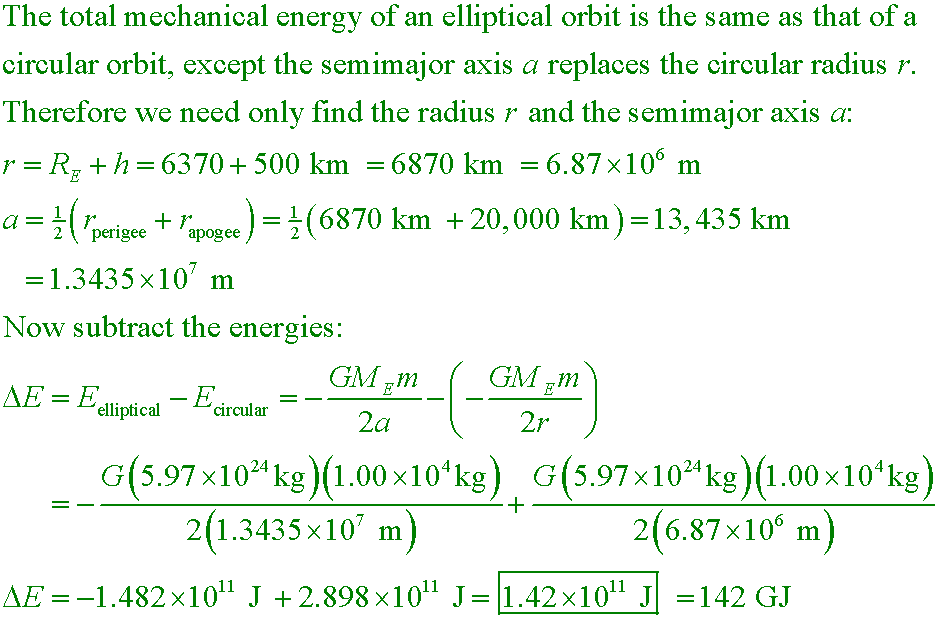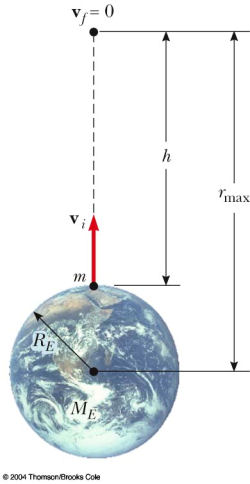Summary
- Newton's Universal Law of Gravity
- Kepler's laws of orbits
- Newton's explanation of Kepler's law
HRW10e 13.26
A uniform solid sphere of radius R produces a gravitational acceleration ag on its surface. At what distances from the sphere's center is the gravitational acceleration ag/3?
A. R/9 and 9R
B. R/3 and 3R
C. R/√3 and 3R
D. R/3 and √3 R
Answer
pse6 13.27
How much energy is required to move a 1000 kg mass from the Earth's surface to an altitude twice the
Earth's radius (r = 3RE)?
A. 3.13 GJ
B. 209 MJ
C. 41.7 GJ
D. 6.26 TJ
Answer
PoP5 11.32
How much work is required to move a 625-kg Earth satellite from a circular orbit of radius
2RE to one of radius 3RE?
A. 3.26 GJ
B. 6.52 GJ
C. 9.77 GJ
D. 19.5 GJ
Answer
PoP5 11.26
A spaceship is fired from earth with an initial speed of 20.0 km/s. What will its speed be when it is
very far from Earth?
A. 128 m/s
B. 16.6 km/s
C. 8.33 km/s
D. 275 km/s
Answer
PoP5 11.34a
What is the minimum speed, relative to the Sun
(MSun = 1.99×1030 kg), necessary for a spacecraft to escape the solar system
if it starts at the Earth's orbit
(r = 1.50×1011 m)?
A. 42.1 km/s
B. 72.9 km/s
C. 538 km/s
D. 1770 km/s
Answer
PoP5 11.25
What is the maximum radius of an asteroid from which an astronaut can escape by jumping straight
upward? The density of the asteroid matches that of the Earth, and on Earth the astronaut can
jump 0.500 m upward.
A. 38.4 m
B. 385 m
C. 525 m
D. 1783 m
Answer
PoP5 11.44
A spacecraft of mass 1.00×104 kg is in a circular orbit at an altitude of 500 km
above the Earth's surface. How much energy is required to get it into an elliptical orbit with
an apogee distance of 2.00×104 km?
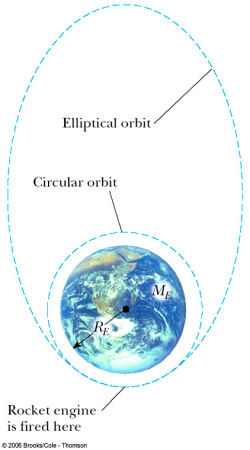
A. 8850 J
B. 1.42×1011 J
C. 1.34×104 J
D. 4.00×108 J
Answer
answer
D. R/3 and √3 R
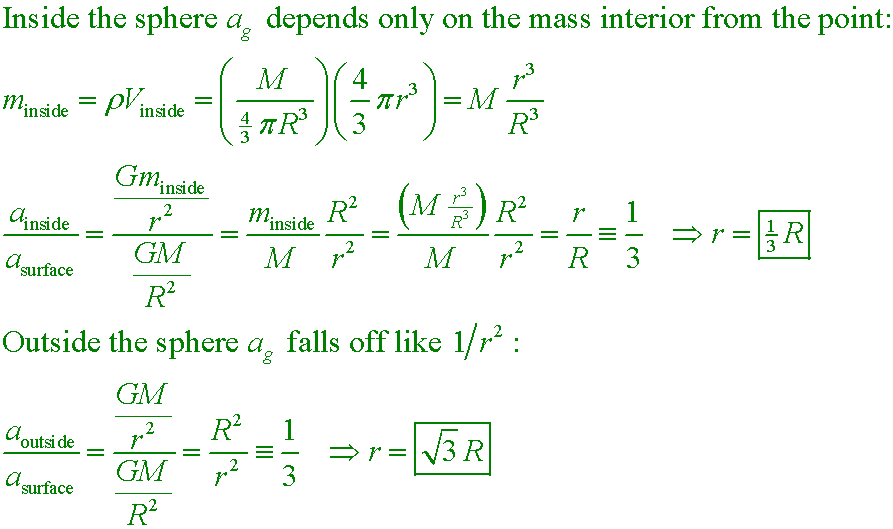
answer
C. 41.7 GJ

answer
A. 3.26 GJ
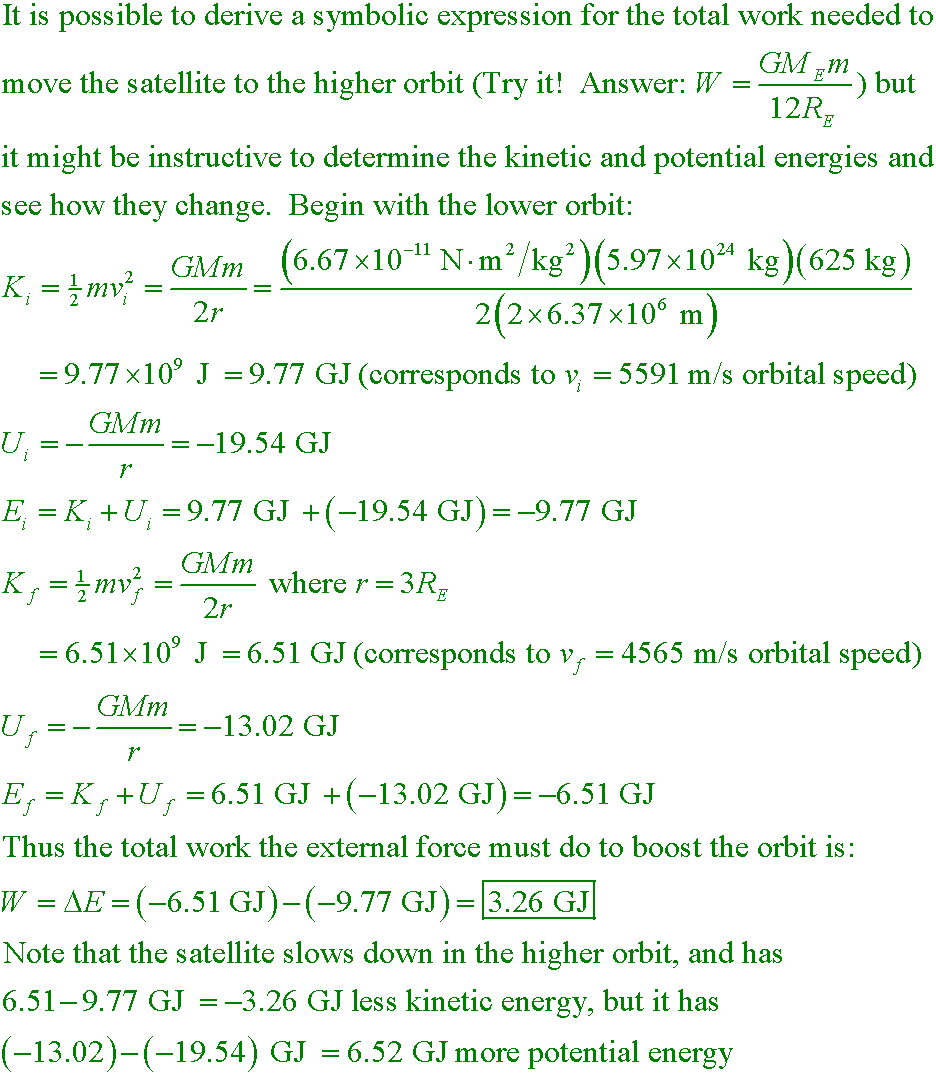
answer
B. 16.6 km/s
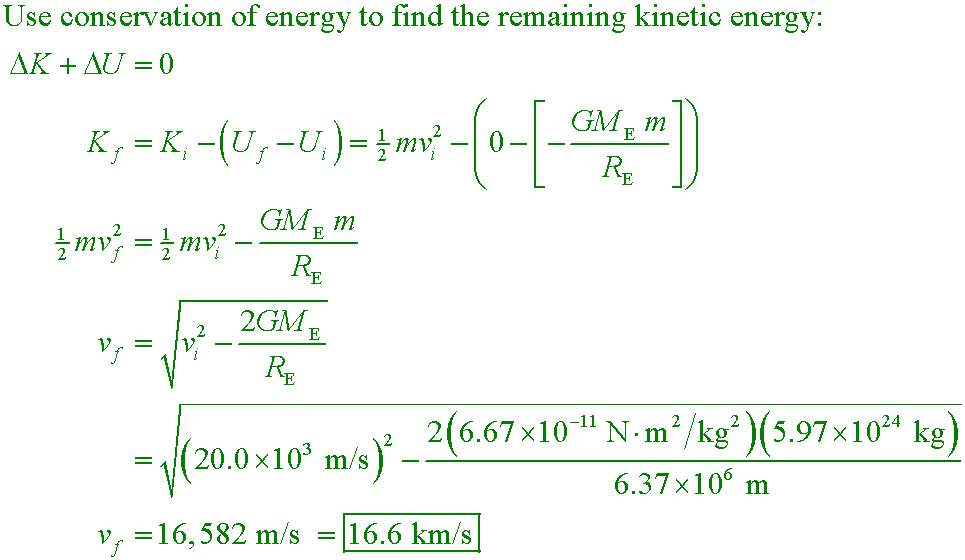
answer
A. 42.1 km/s
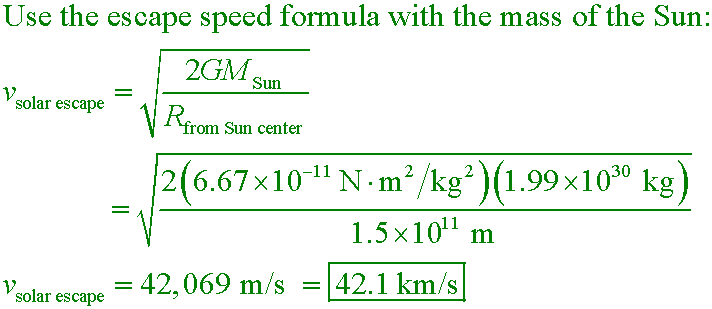
answer
D. 1783 m
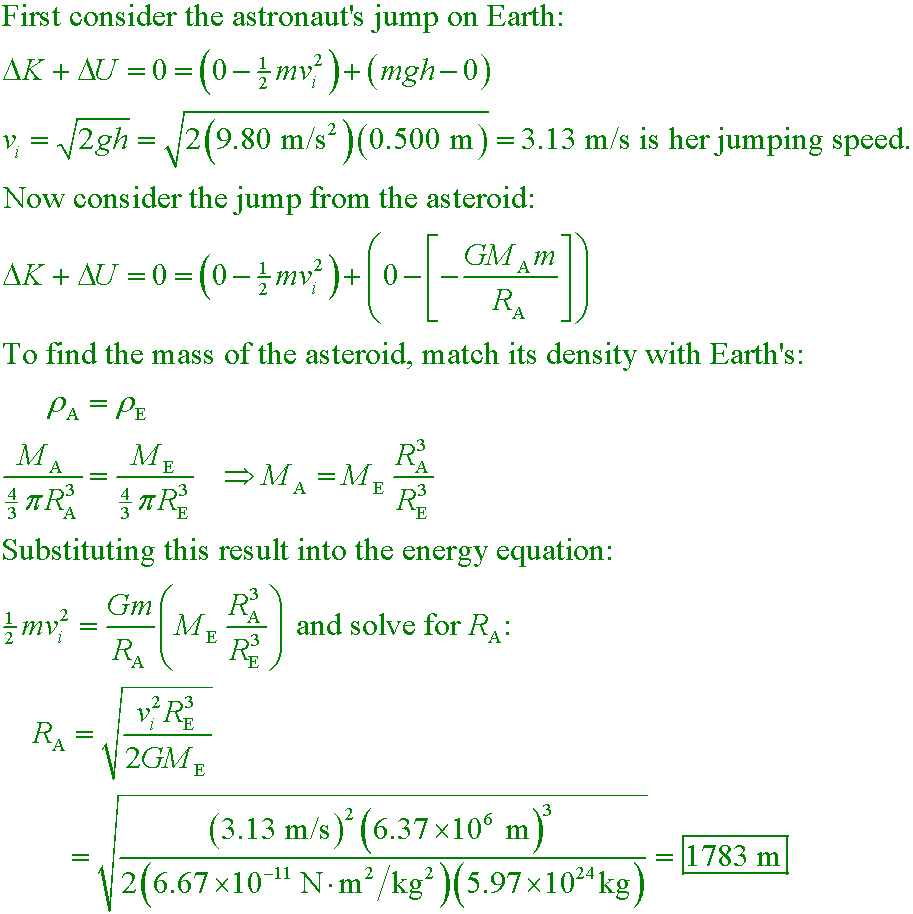
answer
B. 1.42×1011 J
